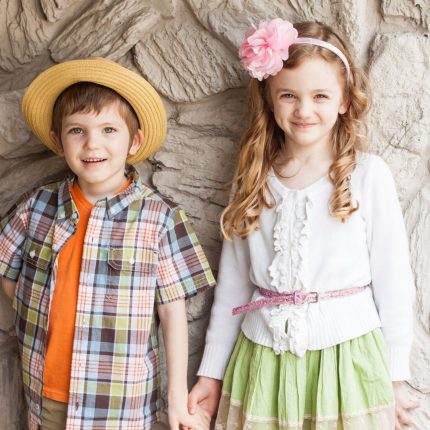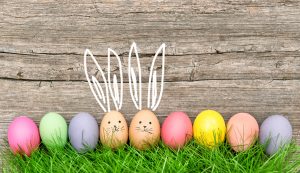
The History of Easter with Study Resources
March 21, 2018You know spring has sprung into full gear when you start seeing blog posts about homeschool conventions and Easter activities! With cute bunnies adorning your local home decorating venues and Easter craft projects flooding your inbox, it’s time to start thinking about preparing baskets and getting ready for the holiday. But, what are we “celebrating” if we celebrate Easter? Those who observe Easter may be wondering why they do and what all the cute symbols even mean. Grab some Easter candy and get cozy – we’ve got some great information ahead!
Where Did Easter Come From?
You may have heard that Easter has pagan origins, which can be confusing if you’re a Christian. After all, Easter is supposed to be a commemoration of the resurrection of Jesus. So, how can it possibly have pagan roots? Interestingly, as is the case with most holidays, there are pagan “ties” to this holiday. In a nutshell, it isn’t the holiday itself that has pagan origins; it’s the name. Borrowing from Greek and Roman tradition, the months get their names from the moon. In “moon names,” the month of March goes by Eostremonath which means “month of Easter.”
As for the holiday itself, it’s a Biblically-based holiday that’s meant to celebrate Christ’s resurrection. To this end, most Christians celebrate it as being one of the only mentioned holidays in the Bible. It’s referred to as Passover in the Bible, which many Christians know of as a Jewish holiday. Nonetheless, the holiday does have Christian grounding.

What Do the Symbols of Easter Mean?
All holidays have coordinating symbols to go along with them, and Easter is no exception! While you may be familiar with most of the symbols of Easter, you may not know why they have meaning. Here, we break down some of the more common symbols:
- Bunnies/Rabbits – Rabbits (actually, hares) are a symbol for the ancient moons. Easter’s date depends on the cycles of the moon each year, which is why it’s not one of the holidays with a set date. Early Christians considered the symbol of a hare coming out of its hole as being similar to Christ coming out of the tomb. Some feel that this is an example of Christians assigning Christian meaning to something that is seemingly irrelevant.
- Eggs – Eggs represent life and life cycles. Some ancient groups believed that the world began with a large egg. Among these groups were Hindus, Egyptians, and Phoenicians. Early Christians, however, decided eggs would be suitable as part of their Resurrection Day celebrations. Today, we enjoy festivities such as egg-dying as part of annual Easter activities. The tradition of hunting for Easter eggs stemmed from German children hiding nests to be filled with goodies on Easter. Stuffing plastic eggs, then, wasn’t too far-fetched from this practice!
- Easter Lilies – Aside from being a beautiful flower, the Easter Lily is said to have emerged from the Ancient Roman goddess Flora who (it was believed) made all flowers bloom. In 1882, however, Easter Lilies were brought to the United States where the served as a reminder of Christ’s purity.
- Lambs – Lambs are probably the most innocent (meaning, no pagan ties) symbols of Easter. Baby lambs are born in the springtime, so they make for a perfect spring symbol. In addition, Christians favored the lamb symbol, likely because the lamb is put in a positive light in the Bible. Today, lambs represent purity and renewal.

Homeschool Easter Activities
Now that you’ve enhanced your knowledge of Easter and its origins, why not take this knowledge to the next level? We’ve collected some great activities to keep your family excited about what they’re learning.
- Looking for some themed spelling and vocabulary activities? Here’s an Easter spelling list from VocabularySpellingCity.com filled with Easter-related words for your students! If you’re looking for a Christian-themed Easter spelling list, they’ve got you covered, too!
- After a long winter cooped inside, you might be itching to get outside, enjoy the spring air, and delve into science activities! For some Easter science activities, head on over to Science4Us’s Pinterest board and see what they’ve pulled together for you.
- Easter bunny games make a great addition to any Easter activities you might be doing. Bonus: these are all Easter learning games!
- If you enjoy curling up with the kids and reading a good book, check out Homeschool Literature’s list of Easter books for kids.
Latest Posts

Guest Post by Gabriel Morse For several years, I sat for long hours every day behind one of those battleship gray desks in a windowless, dull, gray office. The pay was enough to take care…
Read more >
This post is sponsored by Little Monsters Universe. I'm Tina Salmanowitz, an advocate for homeschooling and science education. With over a decade of experience as a science educator (in class…
Read more >
This post is sponsored by Time4Learning. Before the pandemic, it was business as usual for Boca Raton resident Nikki Warris. Her two daughters, 5-year-old Natalie and 8-year-old Lexi were…
Read more >

